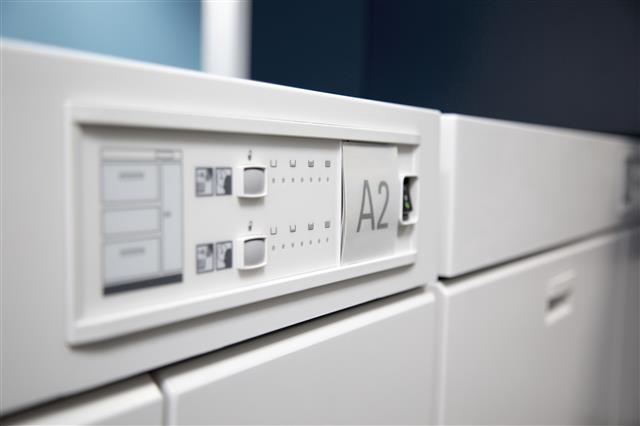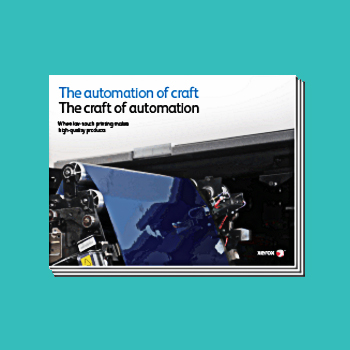“Can I have it in an hour?” It’s a question that would have raised a laugh from the customer service rep in the not-too-distant past. Fast-forward to today and the request wouldn’t raise an eyebrow in print facilities that have seen turnaround times continuously shrink.

The great turnaround squeeze
The need for speed spans print requests from walk-in customers and online orders to B2B companies.
“I’ve been in print for 25 years and when we started out every job had a minimum turnaround of five working days,” says Steve Tappenden, manager, RPM Digital in Dorset, United Kingdom. “Nowadays, 48 hours is an average, and on some jobs customers need it within an hour or even 30 minutes.”
RPM Digital’s client base includes architects with hard-and-fast deadlines, so they know the value of delivering documents on time. “I’ve been in the factory through the night with clients so they can get it out the door first thing to meet their deadline. It’s intense, but if you’ve got a client whose relationship you value, you’ll go the extra mile,” says Tappenden.
Laying the groundwork
In such a high-turnover, high-intensity print ecosystem, it’s survival of the most efficient. Mixing fast, small jobs with high-volume work is a challenge worth taking on when the margins are right. Meeting those tight deadlines day in, day out requires optimized processes that run smoothly and predictably, so you can crank up the pace when you need to.

When an RPM Digital customer places an order, Xerox FreeFlow Core automatically identifies it as a color job and sends it to the desired color printer via a Hot Folder that’s been set up for the purpose. The first human touch doesn’t come until the operator checks that the printer has been switched on for the day. The entire process is largely touchless, with the only human interaction coming when the operator switches on the press in the morning and grabs output off the backend for fulfillment.
Remember, automating a process does not mean compromising on quality – we’ve written about how craft is alive and well in the age of print automation.
Data awakening
When you add variable data to the mix, the need for groundwork is even greater. A personalized print run requires time and effort in the initial setup, but once this process is established and remembered by the system, repeat jobs are a much faster proposition.
“Variable printing is only going to grow as more clients recognize the value of the data at their disposal,” says Tappenden. “We’ve invested in a cross-media future with XMPie to service these clients as they become more willing to put that data to good use. As part of that we’re now opening up our web-to-print store to improve the customer journey from the very first step, whether it’s in person, via a self-service stand or on the web.”

Down to the wire
RPM Digital and its all-nighter architect clients aren’t the only ones working late in the print shop. If there’s one type of customer that takes last-minute printing to a new extreme, it’s university students.
The University of Trondheim, the largest in Norway, needed a printer that could handle the deluge of jobs that comes before every thesis deadline day. That means thousands of small orders coming in over a 2-3 day period, all on a very tight turnaround.
With students leaving it until the last possible minute, the printer could expect up to 2,000 orders in a single weekend. To win the contract, Tore Slettahjell, digital workflow manager, Skipnes Kommunikasjon, had to demonstrate the ability to handle these spikes in volume without missing a beat.
To meet the capacity for last-minute student thesis printing, Skipnes set up an online self-service portal where students can place their orders.

Short print shelf life
Another time-sensitive challenge facing Skipnes was printing packaging labels for one of Norway’s biggest exports: salmon. The pressure of same-day delivery and the need to produce 10,000-40,000 records of variable data put massive strain on their network. As well as getting the variable data right on every unique label, Skipnes knew that they had to deliver the labels on time or the customer would be forced to throw away the perishable salmon.
Skipnes used the FreeFlow VI Compose tool to process each unique variable document ‘on the fly’ at the print engine. As a result, the total time to RIP and print variable information packaging labels has gone from 4 to 5 hours to 4 to 5 minutes.
“It’s very important to have a secure workflow and fast production. Without that, you lose money,” says Slettahjell.
Whatever the document – whether it’s fresh fish labels or a last-minute thesis papers – today’s printers are facing growing pressures from tighter turnarounds. Variable data jobs are bringing further complexity to an already daunting task, so speed is no longer enough. Efficient workflows have to shave valuable seconds from print processes while ensuring accuracy and security are never compromised.
If you’ve got customers who need it in an hour (or less), find out how print workflow software could help you hit the deadline.



